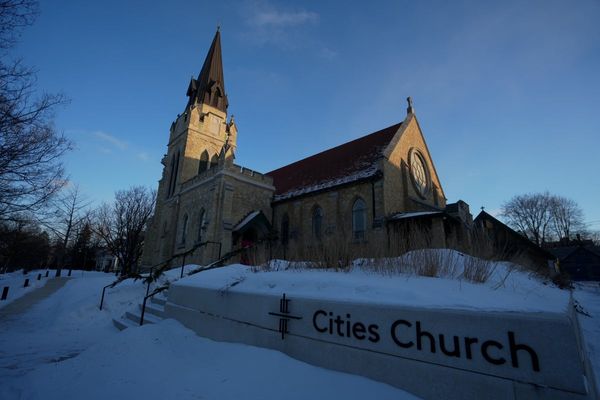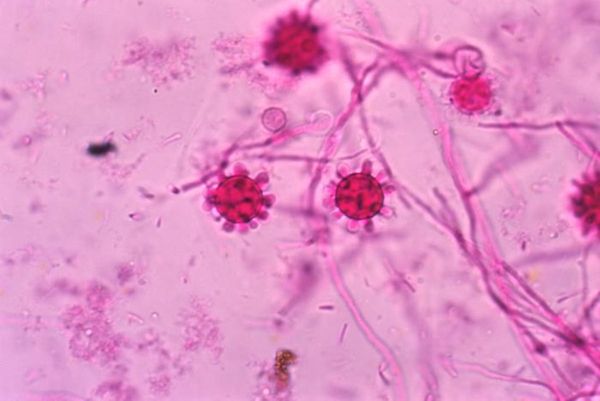LOS ANGELES — Los Angeles County officially moved out of the high COVID-19 community level Thursday as one top state health official expressed hope that California is at the end of the pandemic’s latest wave.
Officials continue to urge caution, noting that coronavirus case rates remain high and still strongly recommend universal masking in indoor public spaces as schools resume classes.
Still, L.A. County’s move from the high to medium level, as defined by the U.S. Centers for Disease Control and Prevention, underscores the recent promising trends in the nation’s most populous county — which prompted officials to drop plans for a renewed mask mandate late last month.
“While we’re greatly encouraged by the decline in cases, hospital admissions and deaths, because viral transmission remains high, there are still thousands of new people each day who are infected and therefore capable of infecting others,” L.A. County Public Health Director Barbara Ferrer said.
Since getting infected causes disruption among families and at workplaces, “and, for some, becoming infected leads to debilitating illness, we advise caution and ongoing use of a layered approach for reducing the risk of exposure and preventing severe illness,” she added Thursday.
A primary prong of that is vaccination. Focus is now turning to the prospect of an omicron-specific booster that may be authorized in late September and available for administration in October, ahead of a potential fall-and-winter wave. It’s unclear, however, what age groups would be eligible for that additional dose.
For the seven-day period that ended Wednesday, L.A. County has reported an average of about 3,900 new coronavirus cases per day — down 26% from the previous week, according to a Los Angeles Times analysis of county data.
On a per-capita basis, that’s 268 cases a week for every 100,000 residents. The summer’s peak rate was 476, logged between July 12 and July 18. A rate of 100 or more is considered a high rate of transmission.
The number of coronavirus-positive intensive care unit patients also has begun to fall. There were 125 as of Wednesday, down 15% from the summer’s July 27 peak.
And weekly COVID-19 deaths may be starting to flatten or drop. L.A. County reported 103 COVID-19 deaths for the week that ended Wednesday, down from a summer peak of 122 for the weekly period that ended Saturday.
To move from the high to medium COVID-19 community level, L.A. County had to record fewer than 10 new weekly coronavirus-positive hospital admissions for every 100,000 residents. The county came close last week, recording a rate of 10.1, according to the CDC.
The most recent assessment released Thursday by the CDC pegged the county’s rate at 9.9.
Originally, Ferrer had said that a new indoor mask order would go into effect if the county reached the high community level and remained there for three weeks. But on the pivotal date — July 28 — she scuttled that possibility, citing marked improvements in coronavirus case and hospitalization rates.
The overall number of Californians living in counties with a high COVID-19 community level also dramatically fell Thursday. There were only 37% of California residents in counties at that level, a substantial drop from the previous week’s proportion of 74%. There were 21 California counties in the high COVID-19 community level, down from 28 the previous week.
Nine counties exited the high level Thursday: Los Angeles, San Diego, San Francisco, Sonoma, Imperial, Sutter, Lake, Calaveras and Modoc. Two entered the high level: Santa Barbara and San Luis Obispo counties.
In Southern California, Orange and Ventura counties remain in the high level; while Riverside and San Bernardino counties remain in medium. Some of the most populous counties in Northern California and the Central Valley, however, remained in the high COVID-19 community level, including Santa Clara, Alameda, Contra Costa, Fresno, San Mateo, San Joaquin, Stanislaus, Solano and Monterey counties.
The trends in L.A. County largely mirror those statewide. Over the weeklong period ending Monday, California reported an average of 12,750 new coronavirus cases per day — a decrease of 26% from the previous week, according to state data compiled by the Los Angeles Times. On a per capita basis, California is recording 228 cases a week for every 100,000 residents.
Coronavirus-positive hospitalizations across California are also down markedly, from more than 4,800 in late July to 4,030 as of Wednesday; coronavirus-positive ICU patients are down from a summer peak of 571 to 484.
“I think we’re hopefully at the tail end now of this most recent surge,” state epidemiologist Dr. Erica Pan said during a panel discussion Tuesday.
With the worst of the wave now seemingly in the rearview mirror, it’s becoming increasingly clear the major uptick in transmission — fueled by subvariants in the super-contagious omicron family — did not wreak the same sort of havoc on hospitals as earlier surges.
Although case counts reached levels surpassed only by the 2020 and 2021 winter waves, the number of coronavirus-positive patients remained comparatively low.
“While we did see a lot of transmission here in California with these new subvariants of omicron again, thankfully, the hospitalizations have been low and stable,” Pan said.
California’s weekly COVID-19 death tally is still climbing, however, and rose to 304 for the week that ended Monday, the highest tally this summer. Still, the latest figure is far less than previous waves. The summer of 2020 peaked at 1,024 weekly deaths, and the summer of 2021 with 945 weekly deaths. During the first pandemic winter, there were 3,815 deaths during the worst week; and the worst weekly death tally last winter was 1,827.
California has reported more than 93,000 COVID-19 deaths since the pandemic began. Nearly 29,000 deaths have been reported in the last 12 months.
Unlike earlier surges, a significant amount of those patients this time around — including 57% in L.A. County — were not hospitalized for COVID-19 illness but happened to incidentally test positive after seeking care for some other reason.
Experts and officials largely credit the wider disconnect between case counts and hospitalizations increased vaccination and COVID-19 treatments. Changes in the coronavirus itself also may have played a role, as there are indications that omicron and its subvariants cause milder symptoms for many than preceding variants.
Despite the improvements, experts warn that COVID-19 is still likely to be deadlier than the flu.
“If we continue on the trajectory we’re on for death rates, this is where we’d end up — with about 100,000 deaths per year, which is three times more than influenza deaths per year. So that’s still substantial mortality,” University of California, San Francisco epidemiologist Dr. George Rutherford said at a panel discussion last week.







